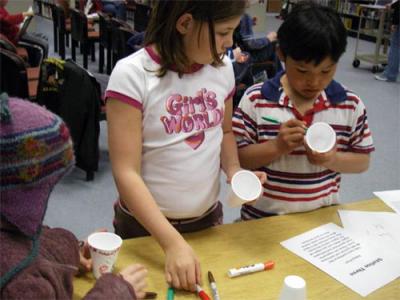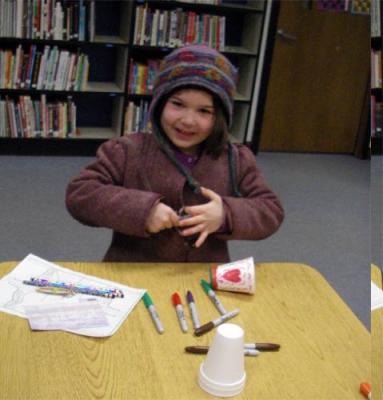We did an experiment a few weeks back. Our students decorated Styrofoam balls, bowls and cups. We asked them to predict what they thought would happen to the object if we sent it down to the bottom of the deep Bering Sea.
Some thought it would expand and become huge, others thought it might be crushed. Still others thought nothing would happen.
So one late late Saturday night and super early Sunday morning we strapped the materials to the CTDA research tool that is submerged in the water to measure conductivity (salinity), temperature, and depth. rosette and let it drop down down down.
Something happened all right.

So when the opportunity came to us from the St. Paul students, to do the experiment again, using cups that they decorated. We were ready. I gathered them up from teacher Tonia Kushin, tucked them into my backpack and counted the days until I would send them to the deep deep deep.

Today is the day. We have gathered them together and stuffed each one with two paper towels so that the cups won’t piggy back into each other. I have deposited them in a mesh laundry bag with Scott Hiller, oceanographer supreme-o, and rest assured they will be strapped to the next CTDA research tool that is submerged in the water to measure conductivity (salinity), temperature, and depth. down.
And now we wait.
At 60 meters per minute, why not calculate how many minutes it will take to go down 3000 feet and then back up. That’s your assignment for today.
You’ll have to wait for tomorrow’s log to find out what happens.
| Attachment | Size |
|---|---|
| polartrecup.doc68 KB | 68 KB |


Comments